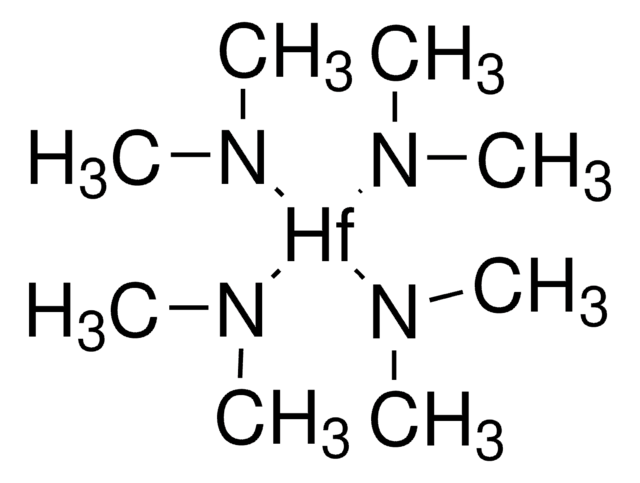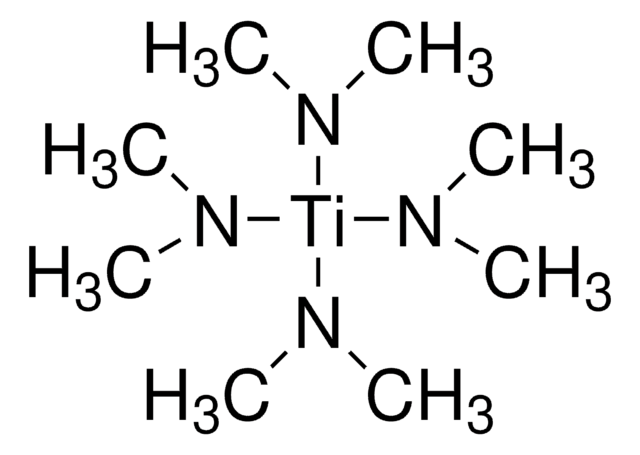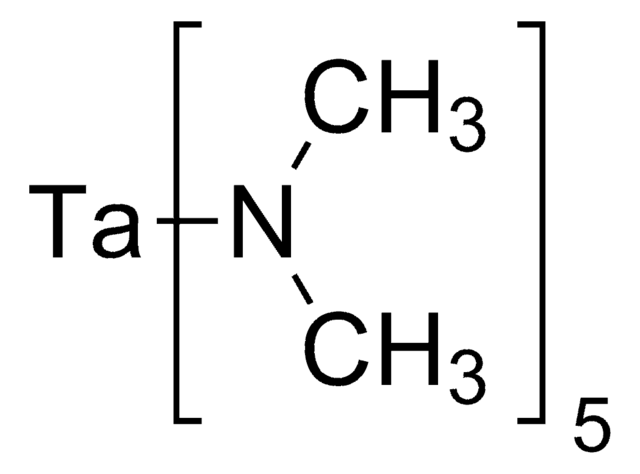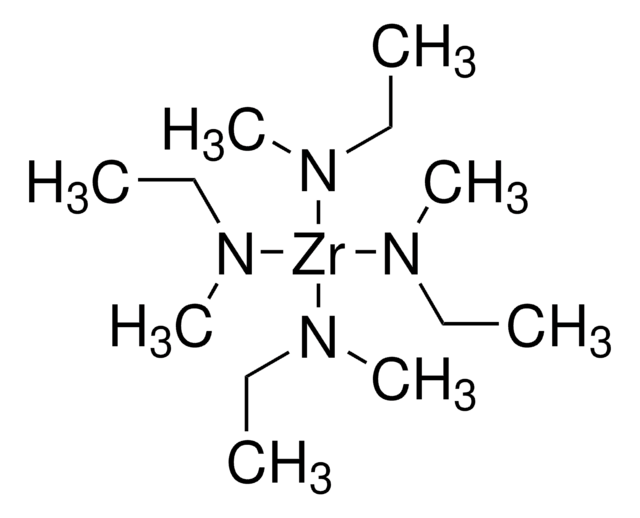469858
Tetrakis(dimethylamido)titanium(IV)
99.999% trace metals basis
Synonyme(s) :
TDMAT, Tetrakis(dimethylamino)titanium(IV)
About This Item
Produits recommandés
Niveau de qualité
Essai
99.999% trace metals basis
Forme
liquid
Pertinence de la réaction
core: titanium
pb
50 °C/0.5 mmHg (lit.)
Densité
0.947 g/mL at 25 °C (lit.)
Chaîne SMILES
CN(C)[Ti](N(C)C)(N(C)C)N(C)C
InChI
1S/4C2H6N.Ti/c4*1-3-2;/h4*1-2H3;/q4*-1;+4
Clé InChI
MNWRORMXBIWXCI-UHFFFAOYSA-N
Vous recherchez des produits similaires ? Visite Guide de comparaison des produits
Catégories apparentées
Description générale
Application
À utiliser avec
Mention d'avertissement
Danger
Mentions de danger
Conseils de prudence
Classification des risques
Flam. Liq. 2 - Skin Corr. 1B - Water-react 1
Risques supp
Code de la classe de stockage
4.3 - Hazardous materials which set free flammable gases upon contact with water
Classe de danger pour l'eau (WGK)
WGK 3
Point d'éclair (°F)
-22.0 °F - closed cup
Point d'éclair (°C)
-30 °C - closed cup
Équipement de protection individuelle
Faceshields, Gloves, Goggles, type ABEK (EN14387) respirator filter
Faites votre choix parmi les versions les plus récentes :
Déjà en possession de ce produit ?
Retrouvez la documentation relative aux produits que vous avez récemment achetés dans la Bibliothèque de documents.
Les clients ont également consulté
Articles
Titanium dioxide (TiO2) is an important n-type semiconducting material that shows interesting characteristics such as photoswitchable surface wettability, high photocatalytic activity, bistable electrical resistance states and high electron drift mobility.
Since the demonstration of the first practical solar cell 60 years ago, research on novel materials, improved solar cell design and structure, and innovative manufacturing processes have all contributed to a continuous increase in the efficiency of photovoltaic (PV) devices.
A Review of Mesoporous TiO2 Thin Films
Nanomaterials are considered a route to the innovations required for large-scale implementation of renewable energy technologies in society to make our life sustainable.
Global Trade Item Number
| Référence | GTIN |
|---|---|
| 469858-1G | |
| 469858-25G | 4061832359182 |
| 469858-5G | 4061838147349 |
Notre équipe de scientifiques dispose d'une expérience dans tous les secteurs de la recherche, notamment en sciences de la vie, science des matériaux, synthèse chimique, chromatographie, analyse et dans de nombreux autres domaines..
Contacter notre Service technique










